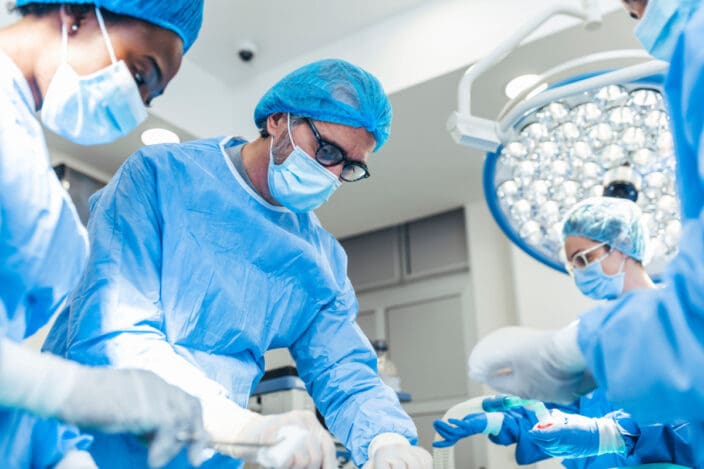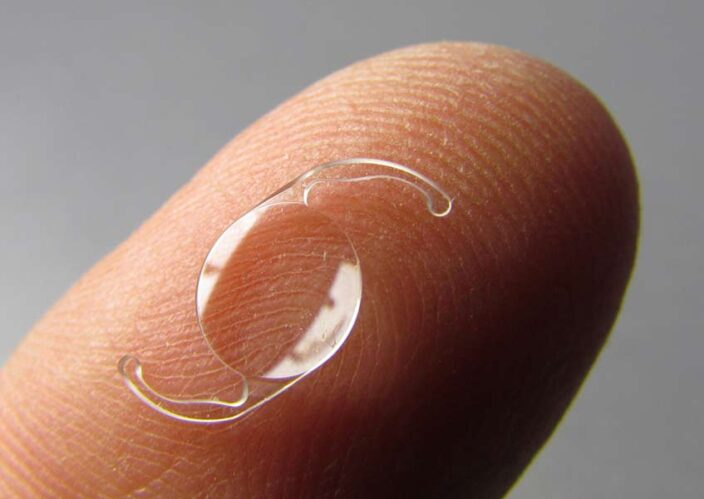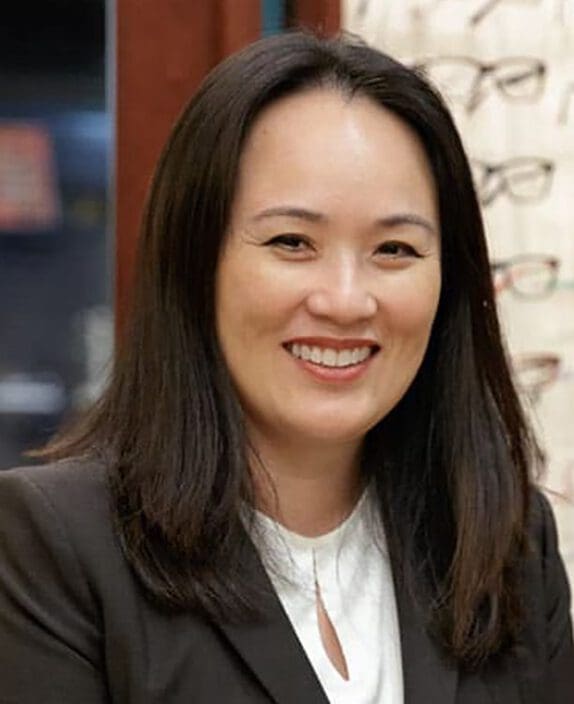
Eye Associates of South Texas Medical Center
Cataract Surgery in San Antonio
Eye Surgery and Eye Care Services in San Antonio, Texas
Eye Associates of South Texas in San Antonio in a comprehensive ophthalmology. We provide surgical and medical eye care services to patients in our community, using the latest technology and techniques. We specialize in laser-assisted cataract surgery and LASIK surgery.
At our clinic, Dr. Joseph Kavanagh leverages his 20 year experience with refractive and cataract surgery to deliver upstanding care to patients looking to enhance their vision. Dr. Christina Bui provides comprehensive ophthalmic care to address patients eye health needs and concerns.
Cataracts and Cataract Surgery
A cataract is a clouding of the natural lens of the eye that obstructs the passage of light. This clouding can cause blurry, hazy, or less colorful vision, and will lead to vision loss if left untreated. Most cataracts are age-related, and start to develop once a person is 40 or older.
During the early stages of cataract, symptoms can be managed with prescription glasses. However, when the cataract develops to the point that impairs vision and daily activities, surgery is required. No other method can restore your vision.
The procedure will be effective even if you wait and the cataract advances. However, it is recommended that you get surgery as soon as you are ready, so your quality of life is not compromised.
Laser-Assisted Cataract Surgery in San Antonio, TX
Laser-assisted cataract surgery is a modern approach to cataract removal. It uses a special kind of technology called a femtosecond laser to perform several steps of the procedure that were traditionally done manually. These steps include:
- Creating Incisions: The laser makes precise incisions in the cornea, which are less invasive than those done by hand and reduce the risk of complications.
- Opening the Lens Capsule: The laser opens the lens capsule, allowing for a more controlled and precise removal of the cataract.
- Fragmenting the Cataract: The laser fragments the cataract into smaller pieces, making it easier to remove.
- Implanting the Intraocular Lens (IOL): After the cataract is removed, an artificial intraocular lens (IOL) is implanted to replace the clouded natural lens, restoring clear vision.
While insurance does not cover advanced technology for cataract surgery, the laser-assisted procedure is highly precise and can offer better visual outcomes, making it a worthwhile investment for many patients, particularly those getting a premium lens implant.
IOLs: Basic and Premium Options for Cataract Surgery in San Antonio, TX
Intraocular lenses (IOLs) are used to replace the natural lens of the eye after cataract removal. There are two main types of IOLs:
Basic IOLs
These are standard, monofocal IOLs that provide clear vision at a specific distance (usually near or far). They are suitable for most patients but may not offer the best visual outcomes, as you will very likely need to wear glasses. Basic lenses are covered by insurance.
Premium IOLs
These are advancedIOLs designed to provide better visual outcomes. There are different types of IOLs, each designed to provide specific visual advantages.
- Multifocal IOLs: These IOLs allow for clear vision at multiple distances, reducing the need for glasses.
- Light Adjustable IOLs: this is a special type of IOL that can be fine-tuned to your exact prescription after cataract surgery, greatly improving vision.
- Toric IOLs: These IOLs are designed for patients with astigmatism, providing clear vision without the need for glasses.
Premium IOLs are more expensive and are not typically covered by insurance. However, they can significantly improve visual outcomes and reduce the need for glasses.
LASIK Surgery in San Antonio, TX
LASIK (Laser-Assisted In Situ Keratomileusis) surgery is a type of refractive surgery used to correct common vision problems (like nearsightedness, farsightedness, and astigmatism), reducing the need to wear glasses or contact lenses. It involves creating a thin flap in the cornea, using a laser to reshape the underlying corneal tissue, and then repositioning the flap.
This quick, usually 15-minute procedure per eye, results in significantly improved vision, with most people noticing better vision within 24 hours and a full recovery within a few weeks.
LASIK eligibility depends on certain eye and health factors. Patients who are not good candidates for LASIK, however, can still get other corrective surgeries that provide similar results.
Not sure if LASIK is right for you?

99% SUCCESS RATE 99% of NVISION patients see 20/20 or better after LASIK

RAPID RECOVERY Resume your normal activities in 24 hours

COMFORT-FOCUSED LASIK is virtually painless and completed in minutes
Eye Associates of South Texas Medical Center
10935 Wurzbach Rd #202San Antonio, TX, 78230
Mon - Fri: 8 AM - 5 PM
Saturday: 8 AM - 12 PM
Sunday: Closed
Hurry, Offer Ends Soon
Book now for $1,000 off LASIK* + Enjoy Easy and Fast LASIK Financing**
Vision Correction Procedures in San Antonio
Today's life-changing procedures make it possible to improve your vision to 20/20—or better.
LASIK Eye Surgery
LASIK eye surgery is a safe, highly effective solution to correct vision and eliminate the need for glasses or contacts. At NVISION, our expert surgeons use state-of-the-art technology and advanced techniques to deliver exceptional results and have you back to your routine quickly.

EVO ICL™ (Implantable Collamer Lens)
Say goodbye to glasses and contacts with EVO ICL™! This advanced procedure is an excellent option for patients who aren’t LASIK candidates. By placing a biocompatible lens in your eye—without removing the natural lens—EVO ICL™ corrects nearsightedness and astigmatism, providing clear, long-lasting vision.

Cataract Surgery
Cloudy vision holding you back? Our advanced cataract surgery, featuring laser-assisted technology and lifestyle lenses, can restore your sight and help you enjoy life’s moments clearly again.

iDose® TR Glaucoma Treatment
iDose® TR is a micro-sized implant that provides a continuous release of glaucoma medication directly inside your eye. This ensures 24/7 eye pressure control – it’s so effective that 8 out of 10 patients don’t need glaucoma drops anymore.

Refractive Lens Exchange (RLE)
Refractive Lens Exchange (RLE) replaces your eye’s natural lens with a clear, artificial one—improving your vision and reducing your dependence on glasses or contacts.
Sometimes called Custom Lens Exchange (or CLE), RLE is popular option for adults over 40 who want to correct nearsightedness, farsightedness, or astigmatism—and it’s a smart, preventative solution before cataracts ever develop.

Other Procedures
Lifestyle Lenses
Lifestyle lenses are a premium lens option that offers a more functional range of vision, and are designed to reduce the need for distance and reading glasses.
We offer the latest and most advanced lifestyle lens on the market.
Dry Eye Treatment
Dry eye is an irritating, painful, and common condition in which the eye fails to properly produce quality tears. When left untreated, it may lead to ulcers and scars on the cornea.
Depending on the severity of your condition, there are a variety of treatments to relieve dry eyes.
PRK Surgery (Photorefractive Keratectomy)
What is PRK Surgery?
PRK Surgery (Photorefractive Keratectomy) is a type of laser eye surgery that is used to correct refractive errors such as nearsightedness (myopia), farsightedness (hyperopia), and astigmatism. PRK is an alternative to LASIK eye surgery and is particularly suitable for individuals who may not be candidates for LASIK due to certain corneal characteristics.
Overview of the PRK surgery process:
- Corneal Epithelium Removal:
- In PRK, the surgeon begins by removing the thin outer layer of the cornea called the epithelium. This can be done using an alcohol solution, a special brush, or a laser.
- Laser Reshaping of the Cornea:
- Once the epithelium is removed, a laser is used to precisely reshape the cornea. The laser ablates or removes microscopic amounts of corneal tissue based on the patient’s refractive error. The goal is to correct the curvature of the cornea and improve the focus of light on the retina.
- Healing Process:
- Unlike LASIK, where a corneal flap is created, PRK does not involve creating a flap. Instead, the corneal surface is allowed to regenerate naturally. The healing process involves the growth of new epithelial cells over the treated area.
- Post-operative Care:
- Following PRK surgery, patients are given medicated eye drops to aid in the healing process and prevent infection. Recovery may take a bit longer compared to LASIK, and patients may experience temporary discomfort during the initial days.
Key considerations for PRK surgery include:
- Corneal Thickness: PRK may be a suitable option for individuals with thinner corneas who may not be ideal candidates for LASIK.
- Occupational Considerations: PRK may be recommended for individuals with occupations or lifestyles that carry a risk of corneal injury, as it eliminates the creation of a corneal flap.
- Healing Time: The initial visual recovery may take longer with PRK compared to LASIK. Patients typically experience optimal vision several weeks after the procedure.
PRK is a well-established and effective procedure for vision correction, and its suitability depends on individual factors. It’s important to consult with an experienced refractive surgeon or eye care professional to determine the most appropriate laser eye surgery option based on your eye health and lifestyle.
Laser Blepharoplasty
Laser blepharoplasty eye surgery, also known as laser eyelid surgery, is a surgical procedure to rejuvenate eyelid tissues (skin, muscle, or fat). Blepharoplasty is performed for both cosmetic and vision correction purposes. NVISION has an eye clinic to help address your needs – Book a consultation today.
Minimally Invasive Glaucoma Surgery (MIGS)
Glaucoma is a disease that occurs when pressure from fluid buildup damages the optic nerve. In this advanced glaucoma eye surgery, often called MIGS, fluid drainage is improved with a microscopic stent.
Recommended Reading



We Accept Insurance
At NVISION Eye Centers, we work with many insurance companies to provide the best service possible for each of our patients. Below you will find a list of our current providers for this location. Please call us if you do not see your specific provider, as NVISION frequently adds new insurance companies and offers many out of network options.
- Aetna
- Cigna
- Humana
- Medicare
- AIG Workers Comp
- Amerivantage
- Blue Cross/Blue Shield
- Coventry
- Eye Med
- Guadalupe Healthcare Network
- Healthcare Highway
- Healthsmart
- Health Texas Medical Group
- Independent Medical Systems
- Medical Eye Services
- Medicaid
- Occunet Workers Comp
- OMNI
- PVC
- Railroad Medicare
- Superior Vision Plan
- Three Rivers Provider Network
- United Healthcare
- VSP Vision Care
- WellMed
- Spectera
- VBA
- Avesis
- Community Eye Care
- SafeGuard Vision
- Met Life Vision
Surgeons at Eye Associates of South Texas Medical Center

Dr. Bui, a San Antonio native, is a board-certified ophthalmologist focusing on pediatric ophthalmology, neuro-ophthalmology, and the treatment of glaucoma and retina diseases.
At NVISION® Eye Centers, we provide life-changing results, an exceptional experience, and a lifetime commitment to your LASIK vision correction.
- Industry-leading surgeons and vision outcomes with more than 2 million successful procedures
- The most advanced laser and diagnostic technology available
- Financing available – no down payment, zero or low interest, low monthly payments
- Free LASIK consultations
- Use your FSA/HSA balance toward LASIK before it expires in December
Location Information
Eye Associates of South Texas Medical Center
10935 Wurzbach Rd #202, San Antonio, TX 78230
(210) 697-3937



